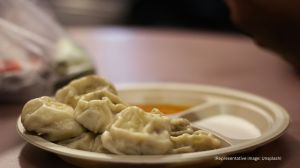A question of culture
The recent massacre in a remote South Kashmir village is not yet anotheraddition to a dozen carnages conducted here during the decade-long...

The recent massacre in a remote South Kashmir village is not yet anotheraddition to a dozen carnages conducted here during the decade-long violence,it was the first attack on the Kashmiri Sikh community after the emergenceof militancy. And if the fear psychosis led to their exodus out of theValley, it will be the last nail in the coffin of Kashmir’s centuries-oldcomposite culture and ethos.
In fact, for the first time the 80,000 Sikhs living in around 116 villagesacross the Valley are now feeling insecure in their ancestral homes. “If weare not allowed to live here, we will have no option but to leave,” saidProf. Prem Singh, a respected Punjabi scholar and Sikh leader of the Valley.“We had been safe in the Valley in the most difficult times. We are unableto understand what went wrong,” he said.
The Kashmiri Sikhs have already framed a Joint Action Committee, comprisingall the political, religious, social and cultural organisations of thecommunity, to take a final decision regarding the course of their action.“If we decide to leave Kashmir, it will be mass migration,” said CharanSingh Bhali, chairman of the Committee.
“Kashmir is our home and our hearts are here. We don’t want to leave. Buthow will you live at a place where even your life is not safe.”
It is interesting that the Kashmiri Sikhs, like Kashmiri Muslims andPandits, are proud of their unique cultural heritage. “We are culturally somuch linked with the majority community (Muslims) that it is difficult toeven think of starting our lives afresh anywhere else,” Prof Prem Singhsaid. “Humara tu in galion say, es zamien say rishta hai (We have anemotional bond with these lanes and this land),” he said. He said thecommunity, though with strong influences of Punjabi culture, is stilldifferent from the Sikhs living outside Kashmir. “We wear pherans’ and usekangris. Our lifestyle is similar to Kashmiri Hindus and Muslims,” hesaid.
The community has, however, another much stronger bond with Kashmir. “It isnot just leaving a home. It is much more than that,” said Amarjit SinghBakhshi, a Kashmiri Sikh leader. “Kashmir has not been only a place ofReshis and Munnis. It has been an abode of Gurus and Jogis as well.” It isa fact that almost every gurdwara in the Valley has been enacted in thememory of Sikh Gurus, including Guru Nanak, who has visited the Valleyduring his time. It is said Guru Nanak came to Kashmir valley in 1517 fromSinkiang province of China. A Sikh scholar, Jasbir Singh Sarna writes in hisbook, Sikhs in Kashmir that the Guru entered the Valley via Baltal andreached Pahalgam crossing the Amarnath cave.
It is believed Guru Nanak wrote and sung several of his Banis’ like VarMalar Mahala I, Pahari Var Malhar MI, Ram Kali Ke Var M, Maru Sohila Mduring his stay in Kashmir Valley. Gurdwaras were constructed at every towncommemorating Guru’s visit. The famous Gurwara’s in Mattan (Gurdwara MattanSahib), Anantnag (Guru Nanak Asthan), Awantipora and Bandipora (northKashmir), all were built during Guru Nanak’s visit.
Guru Hargobind, the son of the fifth Guru, visited Kashmir in 1620. SikhScholar Sarna writes that the Gurdwara Shahji Marg (Pulwama district) wasconstructed as a first spot of the Guru’s visit. A “Guru’s well” is stillsituated in the nearby forests. The Guru is said to have then staright cometo the house of Bhai Sewa Dass of Kathi Darwaza near Hari Barbat fort inSrinagar. A Gurdwara was constructed there. Gurdwara Chavien Padshahi isalso built to commemorate Guru Hargobind Singh’s visit to the place on thebanks of Jehlum in Baramullah. It is also said that the Seventh Guru, GuruHar Rai, visited the valley in 1660.
The history of Kashmiri Sikhs is full of ups and downs. According to Sarna,the population of Kashmiri Sikhs was estimated about just a hundred at theend of the Mughal rule. During the Afghan rule, Governor Raja Sukh Jiwanbrought thousands of Sikhs in his army and after his death the Sikh soldierssettled in the Valley especially in Parganas (areas) like Tral, Naogam,Kruhin and Hamal. Sarna writes that the population of the Sikhs at the fagend of Afghan rule was about 4,000. He further writes that their populationin 1835 was estimated at 5,000 but after a Sikh Governor, S. Hari SinghNalwa took over there was a substantial increase in the Sikh population.
Nalwa’s encouragement of “Shudi Movement” (offering people of other faithsto embrace Sikhism) led to this increase, writes Sarna. He writes that theSikh population in 1891 was around 10,000 while in 1936, it had gone up to40,000.
The census of 1941, however, puts the population of the Sikhs at 65,835which was 2.3 per cent of the total population of the state. The partitionwas tragic for the Kashmiri Sikhs too. Sarna writes that around 16,000 Sikhsdied in the State during the events of the 1947.
Though the fear psychosis has engulfed the community, several Kashmiri Sikhleaders still feel that mass migration is not practical. “ We are farmersand are not like the Kashmir pandits, who were educated and most of them hadGovernment jobs,” a local Sikh leader said. “How can we live without ourlands and orchards?” he said. But if the perpetrators of this massacresucceed in their game and this minuscule minority leaves the Valley, it willbe the final blow to Kashmir’s composite culture which is already undersevere threat.
Prof Prem Singh, like every sane Kashmiri, is sad. But unlike many others hehas not given up hope. “I know that Kashmir is where the same road leads tothe shrine of Maqhdoom Sahib, the Sharika temple and the Gurdwara ChattiPadshahi. I have absolute faith in it. This is the reason why I don’t wantto migrate,” he said. “If you have to see real Kashmir go to Anantnag,where a mosque, Gurdwara and a temple literally lie in the same compound,”Singh said. “History stands witness to the fact that Kashmiris have alwaysnegated communalism despite attempts by vested interests”.



- 01
- 02
- 03
- 04
- 05




























